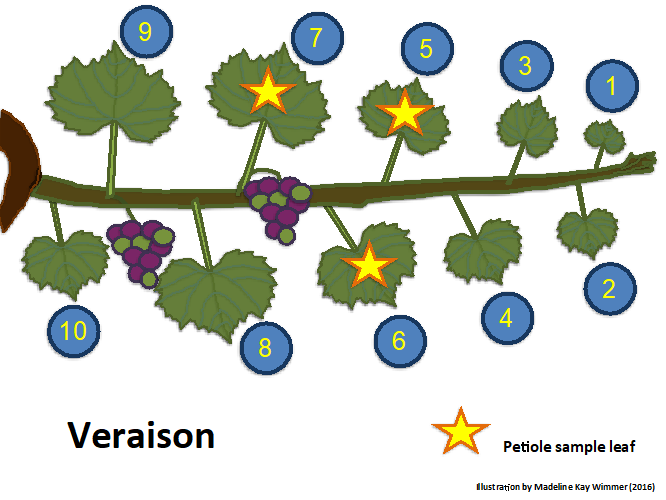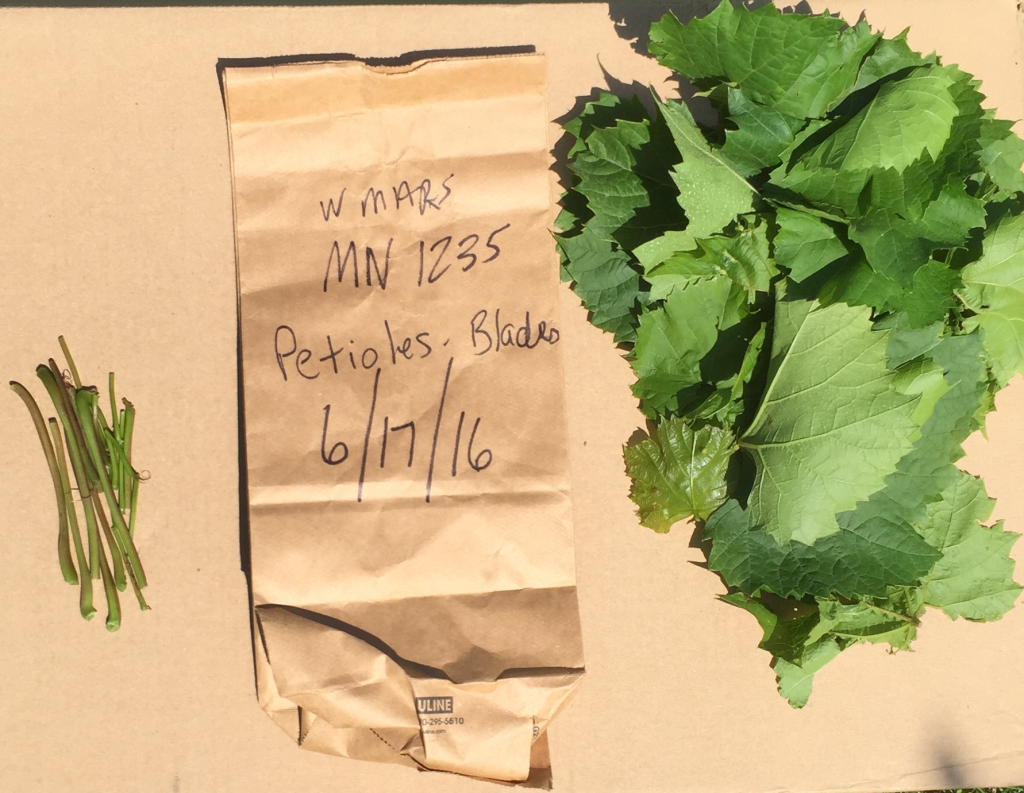Veraison Is Here, Time To Collect Petiole Samples for Nutrient Analysis
There are two recommended timing for petiole sampling, at bloom, or now during veraison. Here are some brief recommendations to collect the sample:
- Divide the vineyard into sampling areas based on the type of soil, cropping history, and variety. In addition separate sampling areas by variety and age (e.g. one sample should be taken for a 3 year old Marquette block, and a separate sample for a 8 year old Marquette block). If you have an area in you vineyard that shows symptoms you should collect a separate sample for it.
- Collect 50-100 leaves randomly from 20-30 vines within a sampling unit, by collecting 2 leaves per vine from both sides of the rows and canopy. Select leaves from shoots that are well exposed to sunlight, healthy, free of insects, diseases or physical injury.
- At veraison, collect the 5th to 7th fully mature leave from the tip to the base of the shoot (make sure the shoot has not been pruned) (Figure 1).
- Separate the petioles from the leaf blades (if rinsing is required remove the leaf blade after the washing process, do not leave the leaves soaking in water as they will leach nutrients) and place the petioles in a labeled clean paper bag (Figure 2). It is critical to label each sample to be able to keep records of each sampling area.
- Let the petioles dry at room temperature or send them immediately to the laboratory. Do not use plastic bags.
- Contact the tissue analysis laboratory before collecting and submitting your samples to determine any specific requirements. UW-Madison Soil and Forage lab provides this service.
- You should request the following nutrients for testing: Total nitrogen (N), phosphorus (P), potassium (K), magnesium (Mg), calcium (Ca), manganese (Mn), zinc (Zn), boron (B), iron (Fe), and copper (Cu).
Sufficiency range for nutrients in cold climate grape petioles at veraison (Based on Domoto and Rosen)
| Nutrient | Veraison (mid July to mid August) |
| Nitrogen (%) | 0.90 – 1.30 |
| Phosphorus (%) | 0.12 – 0.40 |
| Potassium(%) | 1.50 – 2.50 |
| Calcium (%) | 1.00 – 2.00 |
| Magnesium (%) | 0.25 – 0.45 |
| Sulfur (%) | > 0.12 |
| Manganese (ppm) | 30 – 150 |
| Boron (ppm) | 25 – 50 |
| Copper (ppm) | 5 – 15 |
| Zinc (ppm) | 30 – 50 |
| Iron (ppm) | 30 – 100 |



